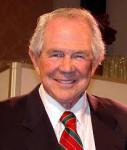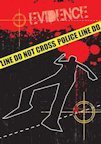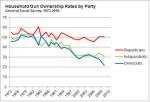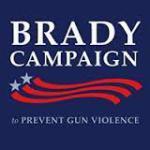Michael R. Weisser's Blog, page 115
June 18, 2015
Hot Off The Ticker: The AME Church Is To Blame For The Shooting Because It’s A Gun-FreeZone
I really don’t want to write this piece, not just because it’s about the unspeakable tragedy that took place yesterday at the Emanuel AME Church in Charleston, SC, but because I knew that by today, the usual pro-gun sycophants would be lecturing us all on the dangers of gun-free zones. Actually, they couldn’t even wait until today, although by this morning, the gun ‘experts’ on Fox & Friends were already advising their audience that if someone in the church had been carrying a gun, “they would have had the opportunity to pull out their weapon and take him out.”
But one of the real experts on gun-free zones didn’t even wait until the shooter was captured to tell us not only why the shooter, Dylann Roof, chose the historic Black church to practice target-shooting with live targets, but also why the now-dead parishioners were really to blame for their self-massacre because they weren’t all sitting there armed. I am referring, of course, to Maestro John Lott, who regularly orchestrates a chorus about the dangers of gun-free zones whenever a particularly nasty shooting takes place.
 Lott announced the shooting on his website with a headline which read: “Another Shooting in a Gun-free Zone.” He then went on to insist that virtually every mass public shooting since 1950 has taken place in a gun-free zone, and then finished up by letting it be known that the Charleston church was a strong supporter of gun control and regularly opposed concealed-carry and stand your ground laws.
Lott announced the shooting on his website with a headline which read: “Another Shooting in a Gun-free Zone.” He then went on to insist that virtually every mass public shooting since 1950 has taken place in a gun-free zone, and then finished up by letting it be known that the Charleston church was a strong supporter of gun control and regularly opposed concealed-carry and stand your ground laws.
Remember the loony statement by Pat Robertson and Jerry Falwell who blamed the World Trade Center attack on America’s moral decay? Now I’m not saying that Lott has become that crazy, but that he couldn’t even wait 24 hours after the unspeakable event to begin peddling a shabby version of ‘they got what they probably deserved,’ speaks volumes about the motives and agenda of this self-proclaimed academic researcher on guns. And for that matter, it also says something about the way in which pro-gun mouthpieces like Lott and others respond every time that a shooting takes place which provokes horror and dread.
Because the simple fact of the matter is that mass shootings aren’t supposed to happen in churches or schools. These places are sanctuaries in every sense of the word, and when we send our children off to school or we ourselves go off to a house of prayer, there’s simply no good reason on God’s Earth why we should stop and consider, even for a second, about whether there’s any chance at all that we or our children will face the horrific trauma of a gun barrel being pushed into our face.

John Lott
But of course John Lott knows that we wouldn’t have to give it a moment’s thought because he also knows something that nobody else knows, namely, that shooters who go into gun-free schools or churches or movie theaters do so because they know that nobody is carrying a gun. After the 2012 shooting at the Aurora, CO theater which left 12 dead and 70 wounded , Lott stated that the reason James Holmes chose the Cinemark theater, even though it was neither the closest theater to his apartment, nor did it have the largest audience, was because it was the “only one where guns were banned.” The trial of Holmes is actually going on right now, but from the time of the shooting until today, Holmes has never once said to anyone that he chose the Cinemark theater because nobody in the audience would be carrying a gun.
If the parishioners at Emanuel AME had just talked to John Lott, they would have realized the error of their ways and would have been carrying guns. And of course Dylaan Roof would have attacked another church. And of course he’s already told John Lott that he walked into Emanuel AME because he knew it was a gun-free zone.


Is Gun Ownership A Risk Or A Benefit? The VPC Report Says It’s Definitely A Risk.
If there is one issue which continues to define the gun debate, it’s whether the 30,000+ gun deaths and 60,000+ gun injuries that occur each year can be justified because guns also protect us from crime. Not surprisingly, the pro-gun community led by the NRA has not only embraced the notion that armed citizens protect us from crime, but use this notion to explain the decline in violent crime over the past twenty years.
While nobody would argue with the idea that a gun can be used as a protective device, the problem is trying to figure out just exactly how often what is called a Defensive Gun Use, or DGU, actually takes place. Most of the DGU evidence is purely hypothetical, based on anecdotal accounts which total less than 100 DGU events per year. For that matter, the DGU survey conducted by Gary Kleck, which claimed that DGU events totaled more than 2 million per year, was based on interviews with 213 respondents, at a time when, according to Kleck, most people with access to a gun that could be used defensively didn’t necessarily have the legal right to own a gun at all. So if you’re trying to gauge how people behave with an object that they can’t necessarily tell you they actually possess, you have something of a problem validating anything they might say.
 The issue of how often guns are used in self-defense is the point of a new study released by the Violence Policy Center, which studied data on DGUs for the period 2007 – 2012. THE VPC study uses data from two sources to get at the number of DGUs that happen each year. The first source is the FBI, which tabulates justifiable homicides, defined as “the killing of a felon, during the commission of a felony, by a private citizen.” In 2012 there were 259 justifiable homicides committed with a gun, and over the five-year period beginning in 2008, the yearly average was 221.
The issue of how often guns are used in self-defense is the point of a new study released by the Violence Policy Center, which studied data on DGUs for the period 2007 – 2012. THE VPC study uses data from two sources to get at the number of DGUs that happen each year. The first source is the FBI, which tabulates justifiable homicides, defined as “the killing of a felon, during the commission of a felony, by a private citizen.” In 2012 there were 259 justifiable homicides committed with a gun, and over the five-year period beginning in 2008, the yearly average was 221.
The other source for DGUs is the National Crime Victimization Survey (NCVS) conducted each year by the Department of Justice, which shows an average of 47,140 DGUs each year. The NCVS data doesn’t indicate whether a gun that was used in self-defense against a criminal was actually fired, but it does disclose that of all methods used by victims of violent crimes to defend themselves before or during the attack, a gun was the preferred method of defense less than 1% of the time. What was the most frequent way in which crime victims defended themselves? What you would expect, namely, by using their mouths to yell, scream or otherwise alerting either their attacker or others that something dangerous was going on.
Not surprisingly, pro-gun advocates have been taking pot-shots at the NVCS and other surveys which show minimal DGUs with guns. Gary Kleck recently re-surfaced in Politico where he defended his 1994 estimate of 2.5 million yearly gun DGUs without advancing any new data, even though the extension of CCW to all 50 states has rendered his basic thesis (that most people could not admit to carrying a gun outside the home) basically invalid.
I buy the NVCS data about DGUs for one simple reason, namely, that the survey covers a large number of respondents – more than 90,000 households – and is conducted yearly so that trends can be developed and verified over time. I also buy the FBI data because, when all is said and done, justifiable homicide is an objective definition for DGUs, rather than a subjective opinion about a criminal event that may or may not have taken place. In that regard, by comparing the scant number of gun DGUs to the 90,000+ gun mortalities and morbidities that occur each year, the VPC report represents a positive contribution to the gun debate. And if the pro-gun folks don’t feel comfortable engaging in a debate using evidence-based data, so what else is new?


June 16, 2015
If Schools Can Teach Safe Sex, Can’t They Teach Safe Guns?
Sooner or later, probably sooner, the number of Americans who die in car crashes each year will be exceeded by the number of Americans who die because someone put a bullet into their brain, or into their chest, or into some other vital part of their anatomy and the most skilled trauma surgeon on call when they are rushed into the ER won’t be able to put them together again. I’m not being sarcastic when I talk about the skill of the trauma surgeon, by the way; gun injuries are much more difficult to treat than any other kind of serious trauma and the costs of gun injury to the medical system are two or three times higher than the costs of any other type of injury.
 An interesting commentary on the auto trauma – gun trauma issue was recently posted on Huffington written by a pediatrician, Claire McCarthy, who practices at Boston Children’s Hospital. Dr. McCarthy makes the point that the response to injuries usually involves some kind of safety laws and rules that will limit injuries and therefore reduce risk when the particular product is being used. In this regard she cites the fact that all states have similar licensing requirements for driving, and that all states require seat belts, particularly when kids are in the car. On the other hand, she notes that licensing for gun ownership varies from state to state if it is required at all, and that when new gun laws are proposed, somehow the argument turns into a disagreement about rights, not about safety. The way she puts it, and I love this sentence: “I can’t imagine someone framing motor vehicle safety as a personal freedom issue.”
An interesting commentary on the auto trauma – gun trauma issue was recently posted on Huffington written by a pediatrician, Claire McCarthy, who practices at Boston Children’s Hospital. Dr. McCarthy makes the point that the response to injuries usually involves some kind of safety laws and rules that will limit injuries and therefore reduce risk when the particular product is being used. In this regard she cites the fact that all states have similar licensing requirements for driving, and that all states require seat belts, particularly when kids are in the car. On the other hand, she notes that licensing for gun ownership varies from state to state if it is required at all, and that when new gun laws are proposed, somehow the argument turns into a disagreement about rights, not about safety. The way she puts it, and I love this sentence: “I can’t imagine someone framing motor vehicle safety as a personal freedom issue.”
Dear Dr. McCarthy: Let me be the first one to welcome you to the world of guns. Because in the gun world, particularly the gun world as it has been created and nurtured by the NRA, gun safety has absolutely nothing to do with safety, it only has to do with rights. And your innocence in this regard (obviously intended, not real) is your comment that “we get that cars are dangerous.” Which is exactly the point. For the folks who live in the gun world, guns aren’t dangerous. In fact, the whole reason for owning a gun is that it protects those of us who inhabit the gun world from things that are really dangerous like robbers, and street thugs, and terror cells which are now, according to the NRA, actively operating in every city. What do cars protect us from? Being late to work and getting chewed out by the boss? Big deal. That’s hardly a trade-off. I’ll take the protective value of guns over cars any time.
But seriously Dr. McCarthy, your Huffington op-ed was what we would expect from someone with your background, training and experience. It was literate, informed, rational and based on evidence-driven facts. The only problem is that the folks who really need to be persuaded by your enlightened approach to the problem of gun violence don’t think that way at all. The day after Christmas a young mother was shot to death in a WalMart in Idaho. She wasn’t shot by a robber or a terrorist – she was shot by her two-year old son who reached into her pocketbook and yanked out her loaded gun. Now what in God’s name made this poor woman actually think that she needed to defend herself in a WalMart store? And we’re not talking about some semi-literate living in a trailer park in Tennessee. The victim was a college graduate who worked at the U.S. Department of Energy lab and I’ll bet she made sure to buckle her kid into that safety seat before she drove off to the store.
Public health approaches to injuries – seat belts, window gates, pool fences – have worked again and again. What we need in the case of guns is something much more fundamental. We need education and if schools can teach safe sex and safe eating, why can’t they teach safe guns?


June 15, 2015
Bye Bye, American Pie: The End Of Colt Firearms.
If kids growing up today learn the word Apple for their first consumer product, then when I grew up in the 1950s, the first consumer product name we knew was Colt. So there’s a bit of personal regret, I must admit, at the not-unexpected news that Colt, the storied old gun manufacturer, has slipped into Chapter 11 and appears to be on the way out. This won’t be the first time that Colt has hit the skids, in fact the company almost didn’t survive shortly after Samuel Colt started it up in 1836, and it went through bad times – work stoppages, strikes, business downturns – on a regular basis every ten or twenty years. In fact, my father’s first job was at Colt’s in 1941 but he decided not to remain with the company because my mother didn’t particularly like living in Hartford and he was convinced that the company would fall on hard times once World War II came to an end. He was right. It did.
 Colt’s has not only been the oldest, continually-operating manufacturing company in America (although sometimes it operated in name only) but the rampant Colt logo, which adorns the frame of every gun, was the first commercial logo ever copyrighted in the United States. The problem with the company, however, was that it always tied its product development to what it perceived would be the next generation of military small arms, and while it guessed correctly sometimes, such as with the Colt 1911 pistol, other times it guessed wrong. And because it guessed wrong on the military side, it missed changes in the civilian market as well.
Colt’s has not only been the oldest, continually-operating manufacturing company in America (although sometimes it operated in name only) but the rampant Colt logo, which adorns the frame of every gun, was the first commercial logo ever copyrighted in the United States. The problem with the company, however, was that it always tied its product development to what it perceived would be the next generation of military small arms, and while it guessed correctly sometimes, such as with the Colt 1911 pistol, other times it guessed wrong. And because it guessed wrong on the military side, it missed changes in the civilian market as well.
The biggest mistake the company made was to tie its fortunes over the last several decades to the M-16 battle rifle, whose design Colt purchased from Gene Stoner in 1961 and then began receiving large military contracts in the build-up in Viet Nam. By the 1980s the original patents had expired, Colt could no longer protect its brand, and other companies like Bushmaster and FN began outselling the Hartford-made product both to the U.S. military and abroad.
You would think that Colt would have revived over the last few years given the upsurge in demand for black guns (a.k.a. assault rifles, a.k.a. modern sporting rifles) on the civilian side, but this didn’t happen at all. First, other companies like Bushmaster and DPMS had focused their marketing on commercial sales, and this made Colt just one of many companies now selling to the public at large what had become a generic gun design. Second, Colt abandoned revolver production in the mid-1990s, never got into small, polymer-frame pistols which were the coming thing, and kids turning into gun-buying adults just don’t watch cowboy movies any more. It’s hard for me, a pre-Boomer, to imagine not knowing the name Colt, but I’ll bet you my teen-age grandson has no idea what the name means at all.
But leaving aside issues of consumer tastes and how those tastes change, I think there’s another major reason why Colt’s is on the veritable block, namely, the fact that the demand for black guns has run its course, and none of the gun companies whose balance-sheets are dependent on sporting-goods sales of ARs are having an easy time. Even Smith & Wesson, whose AR products only accounts for a small percentage of their overall sales, admitted that the 10% decline in overall revenues for Q3 on a year-to-year basis was from a shrinking AR market which “drove most of the sales decline.”
A gun company selling only one, basic product which nobody wants to buy is a gun company in trouble. And no matter what the NRA and all the pro-gun advocates say, guns still represent a particular consumer product which a majority of American consumers can do without. And if Americans can do without guns, they can even do without an iconic name like Colt.


June 14, 2015
Do We Really Know How Many Americans Own Guns? Depends Who Wants To Know.
How many Americans own guns? The answer to this question is probably the single, most important piece of data for both sides of the gun debate. If the number of Americans who own guns is increasing, then arguments for gun control will be accepted by fewer and fewer people every year. However, if fewer people turn out to be gun owners, then efforts to push new gun control legislation will run up against less resistance over time. Either way, figuring out the actual number of people who own guns is difficult because very few jurisdictions actually require that every individual gun owner register his or her guns. So we are forced to fall back on various surveys or polls, which always leave room for doubt because, by definition, the results of any public survey can be interpreted in more than one way.
The latest example of how a survey of the number of gun owners can be looked at from two very different perspectives are the reactions to the latest General Social Survey conducted by the AP-NORC Center at the University of Chicago and published every two years. The survey asks many questions that have been unchanged since 1972, it is based on interviews with 2,500 respondents, and it is generally considered the most reliable indicator of American socio-political attitudes and how these attitudes change over time.
The GSS has been asking the following question since 1972: “Do you happen to have in your home or garage any guns or revolvers?” Since the question was first asked in 1972, when the overall response was roughly 50%, the number of positive responses has been slowly but surely going down. It’s higher in households who declare themselves to be Republicans as opposed to Democrats or Independents, but in all three groups, notwithstanding a brief Obama-provoked increase among Republican respondents between 2008 and 2012, the overall number keeps edging South, with the high watermark of 53% reached in 1978 and the 2014 figure sliding to its current 32%.
 This part of the report, as you can imagine, came in for its share of positive versus negative press depending on the general attitude towards guns. The Violence Policy Center issued a very detailed analysis of the findings, and announced that the shrinkage of American gun ownership was an “unavoidable conclusion” of the GSS survey, reflecting “the aging of the current-gun owning population, primarily white males, and a lack of interest in guns by youth.” The NRA, on the other hand, touts a Gallup survey which showed household gun ownership at 42%, although they neglect to mention that this number has also dropped nearly 10 points since 1994.
This part of the report, as you can imagine, came in for its share of positive versus negative press depending on the general attitude towards guns. The Violence Policy Center issued a very detailed analysis of the findings, and announced that the shrinkage of American gun ownership was an “unavoidable conclusion” of the GSS survey, reflecting “the aging of the current-gun owning population, primarily white males, and a lack of interest in guns by youth.” The NRA, on the other hand, touts a Gallup survey which showed household gun ownership at 42%, although they neglect to mention that this number has also dropped nearly 10 points since 1994.
I happen to think that the GSS findings are probably accurate for three reasons. First, the GSS develops its data based on in-person interviews, rather than telephone contacts, and the in-depth questioning of each respondent tends to make it easier for the post-interview analysts to differentiate between valid, as opposed to questionable responses received by the survey teams in the field. Second, while the specific numbers on gun ownership between GSS versus Gallup may differ, the trends over time are the same. Finally, I am at a loss to understand why the pro-gun community still believes that gun owners are afraid to disclose their ownership of guns, which continues to be the nonsensical, knee-jerk response to every survey that points to Americans losing interest in guns.
If the NRA is still convinced that gun owners tend to be afraid of disclosing their ownership of guns, why don’t they conduct a study like the one conducted by the head of the GSS, Tom Smith, who found in a 2001 survey of 800 CCW-holders that 90% admitted to owning guns. This study was conducted, incidentally, to eliminate the possibility that the GSS data was based on too many false-negative responses, which it turned out wasn’t true. Instead of theories, opinions and random selection of data, I’d love to see the pro-gun folks just once produce a serious survey to back up their own claims – just once.


June 12, 2015
Want To Carry A Gun Anywhere? A Democrat May Have Just Provided The Chance.
You may recall that for many years both the State of Idaho and the NRA were represented in the U.S. Senate by Larry Craig, who until he was arrested for tying his shoes in an airport toilet, spent as much time promoting the interests of gun owners as he supported the interests of the voters who sent him to Capitol Hill. In 1997 he crafted and submitted the first attempt to create a national concealed-carry licensing system which was basically patterned after the state-to-state reciprocity that we all enjoy when driving a car; namely, if it’s valid in one state, it’s valid in all. Following Craig’s political demise, other pro-NRA politicians took up the issue of national CCW, continue to submit a bill every two years, and while the measure has never passed, it creeps steadily forward bit by bit.
I started thinking about national CCW when Chris Van Hollen, a Maryland Representative who is running for the Senate, introduced legislation to create a permit-to-purchase (PTP) process to cover the transfer of all handguns by giving federal money to states in order to cover administrative costs. Basically, the feds would pay each state that would implement some kind of pre-purchase vetting system requiring a background check prior to the FBI-NICS check that occurs when a federally-licensed dealer sells anyone a gun. Van Hollen’s bill, which of course will go nowhere until Democrats regain control of Congress, would allow each state to establish its own rules for a background check process covering the transfer of all handguns, regardless of whether a subsequent NICS check also occurs.
 The PTP process exists in a number of states, but it usually takes the form of some kind of general licensing procedure which then allows the licensee to acquire any number of guns as long as the PTP-issued license remains in effect. New Jersey, on the other hand, requires a separate permit for the purchase of any handgun; New York City goes one better by requiring that each handgun purchase requires not only an individual permit but also a police inspection of the weapon before the transfer is complete. Most states imposing any degree of PTP usually issue a blanket eligibility or ownership license but all guns acquired from dealers must still undergo the NICS check.
The PTP process exists in a number of states, but it usually takes the form of some kind of general licensing procedure which then allows the licensee to acquire any number of guns as long as the PTP-issued license remains in effect. New Jersey, on the other hand, requires a separate permit for the purchase of any handgun; New York City goes one better by requiring that each handgun purchase requires not only an individual permit but also a police inspection of the weapon before the transfer is complete. Most states imposing any degree of PTP usually issue a blanket eligibility or ownership license but all guns acquired from dealers must still undergo the NICS check.
Basically, any form of PTP imposed on buying a gun would both slow down the process, as well as weed out people whose gun access would represent what we are all trying to prevent, namely, guns getting into the ‘wrong hands.’ To support his national PTP bill, Van Hollen cited a new study by researchers from Johns Hopkins which examined the impact of the Connecticut PTP law that went into effect in 1995 and may have contributed to saving as many as 300 lives over the following ten years. While the PTP implemented by Connecticut may or may not be a basis for comparing the outcome to what would happen in other states with other PTP laws, it’s pretty hard to ignore what happened to Connecticut’s gun homicide rate after the PTP went into effect.
Leave it to the NRA of course to both pooh-pooh Van Hollen’s bill and get it wrong when it claimed that its members “don’t want to ask permission of the federal government to exercise constitutional right,” even though the law would help states, not the feds, keep guns out of the wrong hands. But you would think that someone at NRA headquarters would realize that Van Hollen’s bill would be the perfect vehicle for getting the holy grail of all gun bills passed, namely, a bill extending concealed-carry in all 50 states.
If the NRA would stop pretending to be the valiant defender of the 2nd Amendment, they could offer something both logical and reasonable for both gun safety and gun rights. Because what Van Hollen wants for PTP is what basically exists for driver’s licenses, which is what the NRA wants for CCW as well. Who’s going to blink first?


June 10, 2015
Does the 2nd Amendment Guarantee A Right To Self Defense? The Courts Disagree.
The NRA keeps referring to the 2nd Amendment as a “sacred” right, but I always thought that anything sacred was usually somehow given to us by God. But in fact, the right of Americans to own guns without any connection to some kind of military unit didn’t come from God at all. It came down from a 2008 Supreme Court decision that was decided by one vote. And in fact, the NRA was reluctant to push the Heller case to the Supreme Court because it looked probable, if not likely, that Justice Kennedy would swing over to the liberal side of the nation’s highest tribunal and that would be the end of that.
 Immediately after Heller, various pro-gun groups began challenging state and local laws which allowed for private ownership of guns, but made the licensing process so onerous or arbitrary that owning a gun was difficult enough, using it for self-defense, particularly self-defense outside the home, was basically a non-existent right. In Washington, D.C., the U.S. District Court ultimately found the city’s license requirements unduly restrictive, but in California, a fairly restrictive process in San Diego County for the issuance of concealed-carry licenses was upheld.
Immediately after Heller, various pro-gun groups began challenging state and local laws which allowed for private ownership of guns, but made the licensing process so onerous or arbitrary that owning a gun was difficult enough, using it for self-defense, particularly self-defense outside the home, was basically a non-existent right. In Washington, D.C., the U.S. District Court ultimately found the city’s license requirements unduly restrictive, but in California, a fairly restrictive process in San Diego County for the issuance of concealed-carry licenses was upheld.
This past week another California gun case made it all the way to the Supreme Court, but by a 7-2 margin, Kennedy, Alito and Roberts all moving to the other side, the Court refused to hear a case from San Francisco whose law states that “no person shall keep a handgun within a residence owned or controlled by that person unless the handgun is stored in a locked container or disabled with a trigger lock.” The law was challenged by, among others, an “elderly lady” who believes that she could never defend herself against an intruder if she had to “find her glasses, turn on the light, find the key to the lock box, open the lockbox….” If this isn’t a civilian version of the Keystone Cops, I don’t know what is.
The Ninth Circuit admitted in its ruling upholding the law that it was creating a “burden” on the core right of the 2nd Amendment, but it found this burden to be outweighed by the evidence presented by the City of San Francisco that “guns kept in the home are most often used in suicides and against family and friends rather than in self-defense and that children are particularly at risk of injury and death.” Uh-oh, here comes all that public health research by Kellerman, Hemenway and others about the risks of unlocked guns rearing its ugly head in a federal court. The pro-gun folks have lavished no end of expense and energy trying to discredit such research, and what they got for their efforts was the research was used to justify a limitation on their most sacred right.
The plaintiffs in this case, of course, produced some research of their own, which consisted of data from the Department of Justice showing that 60% of all home robberies take place between 6 P.M. and 6 A.M., precisely the period when people might be sleeping and their need for self-defense is “most acute.” But there’s only one little problem with this data because it also shows that only 1-2% of all forcible home robberies resulted in serious injury to someone present in the home, which means in terms of real numbers that only 10,000 individuals nationwide might have needed to defend themselves against a criminal assault.
The next case which might be reviewed by the SCOTUS involves a challenge to the San Diego law which makes it difficult for anyone to carry a concealed gun for self-defense. Let me give the plaintiffs in that case a little free advice: I wouldn’t push the self-defense argument too far even if Scalia used it as the basis for Heller in 2008. What the SCOTUS recognized in that decision was the fact that 300 million guns are floating around in civilian hands. But that’s not the same thing as saying that every pair of those hands can walk around with a gun.


June 9, 2015
When It Comes To Gun Safety, Everyone Seems To Agree – Kind Of.
Since I truly believe in the Mafia adage, “keep your friends close but your enemies closer,” I tend to watch Fox chat shows from time to time. And I have to admit that in all my wildest dreams I never believed I would see Sean Hannity being as polite and well-spoken to someone like Dan Gross who, as head of the Brady Center, must rank pretty high on the Fox Top Ten Enemies List. After all, in addition to being an outspoken gun-rights advocate, Hannity promotes gun products on his radio show and by putting his face and name on various gun websites. But there he was last night introducing his “personal friend” Dan Gross for a five-minute chat on where they agree and where they disagree about guns.
Well it turns out that Sean and Dan don’t seem to disagree, or at least I didn’t hear much last night that struck me as any real difference of opinion about the ownership and use of guns. Both stated that they supported the legal ownership of guns, both stated that they wanted everyone to lock their guns up or lock them away, and both stated that they wanted to keep guns out of the ‘wrong hands.’ Of course the devil’s always in the details, and if you got Wayne-o to calm down for a minute and stop worrying about Obama’s secret plan to disarm America before January 20, 2017, he’d be happy to come on the Hannity show and basically say the same thing.
 But nice-sounding platitudes aside, I find it interesting that someone as pro-gun as Hannity would give Dan Gross an opportunity to appear before a large Fox audience to prove, if nothing else, that he’s not Lucifer in disguise. Because although Hannity threw in a couple of red-meat comments that are de rigueur on Fox when anyone mentions guns, such as his fear of the ‘slippery slope’ of gun control, he basically let Dan tell the audience how much gun owners had in common with supporters of the Brady Campaign, which is entirely contrary to what usually erupts from the NRA.
But nice-sounding platitudes aside, I find it interesting that someone as pro-gun as Hannity would give Dan Gross an opportunity to appear before a large Fox audience to prove, if nothing else, that he’s not Lucifer in disguise. Because although Hannity threw in a couple of red-meat comments that are de rigueur on Fox when anyone mentions guns, such as his fear of the ‘slippery slope’ of gun control, he basically let Dan tell the audience how much gun owners had in common with supporters of the Brady Campaign, which is entirely contrary to what usually erupts from the NRA.
Ever since the Brady law was voted in 1994, the NRA and other pro-gun groups have kept up a steady drumbeat of anti-Brady commentary designed to convince gun owners that any expansion of background checks is nothing short of a conspiracy to take away all guns. Here’s a typical comment from the NRA in 2013 after Brady mounted a video to mark the 20th anniversary of the original background-check law: “The Brady Campaign’s proposed expansion of federal background checks would force even many family and friends to get government permission for firearm transfers amongst each other and subject all lawful gun transfers to federal paperwork and recordkeeping requirements, the prerequisites for a national registry.” Of course this statement is simply untrue, but it plays directly into the old slippery-slope gun control nonsense that Hannity found necessary to mention on the show.
I have been saying recently that the smartest thing Brady and Everytown have done is to move into the safety space which until now was owned lock, stock and barrel (pardon the pun) by the NRA. But while everyone’s in favor of safety, there’s one safety issue which puts the two sides as far apart as the Brand Canyon’s rims, and Hannity gave it away when he said that no matter how many laws were passed to prevent guns from getting into the ‘wrong hands,’ criminals wouldn’t obey laws anyway, so what was the point of passing more laws?
The pro-gun community falls back on this argument every time that any new measure is proposed that would increase regulation of guns. The problem is that if we only passed laws that criminals would obey, there wouldn’t be any laws at all. Which is actually what the pro-gun community would prefer as regards gun ownership, particularly when a Democrat happens to be renting living space at 1600 Pennsylvania Avenue in Washington, D.C.


June 4, 2015
Does The NRA Really Own The Gun Debate? Even Gun Owners Don’t Necessarily Agree.
In the immediate aftermath of the Sandy Hook tragedy, public opinion polls appeared to show widespread support for strengthening gun laws that would make it more difficult for ‘prohibited persons’ to gain access to guns. In particular, support was strongest for an extension of the NICS background check system to cover most secondary transfers of firearms beyond the initial, counter-top transfer that is covered now. It was this public sentiment which led to the crafting of such legislation, known as Manchin-Toomey, which nevertheless fell short of the votes needed to move the bill through the Senate in April, 2013.
One of the post-Newtown polls showing wide, public support for expanded background checks was conducted by researchers at the Bloomberg Public Health School at Johns Hopkins University, and now that I’ve mentioned the unmentionable, those readers in the pro-gun community will please do everyone a favor and keep their comments to themselves. The bottom line from this survey was that gun owners and non-gun owners expressed similar degrees of support for universal background checks, prohibitions on ownership for persons convicted of violating domestic restraining orders and mandatory sentences for gun traffickers. Where significant differences appeared between the two groups, however, involved ‘bans’ on assault weapons and high-capacity magazines; the word ‘ban’ being toxic to gun owners but much less concerning to those who don’t own guns.
 The Bloomberg group has just released a new poll which, in terms of methodology and sampling, more or less replicates the same poll that was published in 2013. It will shortly appear in the journal Preventive Medicine, but I was able to examine an advance copy of the text. The authors note that in the intervening two years since their last survey, public opinion appears to have shifted away from more gun regulations and is now swinging towards stronger support of ‘gun rights.’ But comparing such data to the more specific policy-oriented questions which comprise this new survey is really oranges versus apples, since such phrases as ‘gun rights’ and ‘gun control’ are simply too vague and too loaded to explain much about public opinion at all.
The Bloomberg group has just released a new poll which, in terms of methodology and sampling, more or less replicates the same poll that was published in 2013. It will shortly appear in the journal Preventive Medicine, but I was able to examine an advance copy of the text. The authors note that in the intervening two years since their last survey, public opinion appears to have shifted away from more gun regulations and is now swinging towards stronger support of ‘gun rights.’ But comparing such data to the more specific policy-oriented questions which comprise this new survey is really oranges versus apples, since such phrases as ‘gun rights’ and ‘gun control’ are simply too vague and too loaded to explain much about public opinion at all.
The new Bloomberg survey shows that there remains a basic bedrock of public opinion that expanding background checks to secondary gun transfers is a good thing to do. In 2013, support for this measure among gun owners and non-gun owners was above 80%, both numbers shifted only slightly in the current survey and the difference between gun owners and non-gun owners was negligible at best. On the other side of the ledger, i.e., banning assault rifles and high-capacity mags, there was again a decisive difference between gun owners who said ‘no’ and non-gun owners who said ‘yes,’ although in this case the percentage of non-gun owners who favored weapon and ammunition bans appears to have slipped.
What I find significant is that 45% of gun owners in both surveys support bans on the sale of assault rifles and high-cap mags. Researchers who focus on policy issues traditionally look for majority opinion as a guide to what may or may not be possibly changed in the public domain. But the fact that slightly less than half of all gun owners support the ban on assault rifles is a finding which needs to be considered on its own terms.
I can’t think of a single issue that has generated more noise and more hype in the gun community than the issue of assault rifles over the last several years. From the phony attempt by the NSSF to dress up these guns as ‘modern sporting rifles,’ to the prancing around by Colion Noir, the industry has done everything it can to promote these guns as akin to motherhood and apple pie. That nearly 50% of gun owners don’t buy this nonsense should give pause to those who still regard the NRA as a behemoth when it comes to influencing public opinion about guns. To me, it’s more like a case of the emperor without clothes.


June 2, 2015
Want More Americans To Buy Guns? Put One In Everyone’s Hands
Back in 1835, the French Chronicler Alexis de Tocqueville published his remarkable portrait of our country, Democracy in America, which retains an extraordinary clarity and insightful awareness to the present day. Based largely on conversations between the author and Americans he met as he went hither and yon, the two-volume work captured much of what we still believe makes America an exceptional country both in terms of word and deed.
Two things that made America exceptional, according to de Tocqueville, was our individualism and our penchant for violence, both of which he believed reflected the degree to which most of America in the 1830s was still largely a frontier zone. What connected individualism and violence, according to de Tocqueville, was the apparent willingness of Americans to settle disputes without recourse to any government authority, and to use weapons to settle disputes, in particular knives and guns. This strikingly American cultural trait remains true to this day, expressed most directly in the current argument about guns. Stop and think about it: gun-control advocates have established a clear link between elevated homicide rates and access to guns; pro-gun advocates claim that the risks of gun ownership are far outweighed by the degree to which guns protect us from crime. Take your pick either way, the fact is that as regards the current argument about guns, what de Tocqueville understood about American culture in the 1830s appears to be alive and well in the present day.
 Ultimately what is going to resolve the debate about guns and gun violence is how guns fit into our overall culture, and right now on this issue America seems to be split. On the one hand for the first time a clear majority of Americans believe that guns keep us safe. On the other hand, despite the upward spike of gun sales since you-know-who moved into 1600 Pennsylvania Avenue, the percentage of American homes with guns sitting around continues to decline. And believe it or not, I believe that these two seemingly contradictory trends will not only continue, but will become even more pronounced over time. Why do I say this?
Ultimately what is going to resolve the debate about guns and gun violence is how guns fit into our overall culture, and right now on this issue America seems to be split. On the one hand for the first time a clear majority of Americans believe that guns keep us safe. On the other hand, despite the upward spike of gun sales since you-know-who moved into 1600 Pennsylvania Avenue, the percentage of American homes with guns sitting around continues to decline. And believe it or not, I believe that these two seemingly contradictory trends will not only continue, but will become even more pronounced over time. Why do I say this?
First, the demographics that are averse to gun ownership will continue to drive the population profile of America as a whole, by which I mean millennials, single women, racial and ethnic minorities, new immigrants, in other words, everyone except older White men. And White males between ages 30 – 60 still own most of the guns. A recent poll of registered voters in New York State showed that virtually all the groups except older White men overwhelmingly supported the restrictive new SAFE Act that will, at least in the case of New York, no doubt result in fewer guns.
At the same time, the media and popular culture continues to promote guns and gun violence as a basic theme. Of the ten most popular movies released this year, half involve multiple shooting scenes with good guys getting shot by bad guys or the other way around. So Hollywood still believes that we respond to settling arguments with guns.
Remember when the local bowling alley was a place where the family would spend Sunday afternoon because the backyard barbeque was rained out? To be sure, there were always a few lanes being used by serious bowlers who were practicing for their next league match, but most of us went bowling just to have some fun. I think the idea of shooting ranges becoming destinations for family fun may be coming into its own; an operation like Colonial Shooting is a far cry from the nasty and overly-serious range environments that cater to the hard-core shooting crowd. If the NRA would stop taking itself so seriously and stop trying to convince everyone that they need to walk around with a gun, the industry might actually begin to attract all those outliers whose natural curiosity will motivate them to shoot guns even if they have no interest in owning one. And you never know, put a gun in someone’s hands and they might actually want to keep it there.





